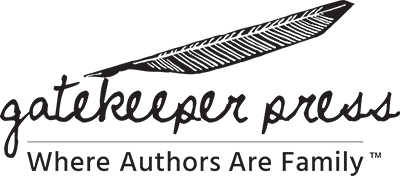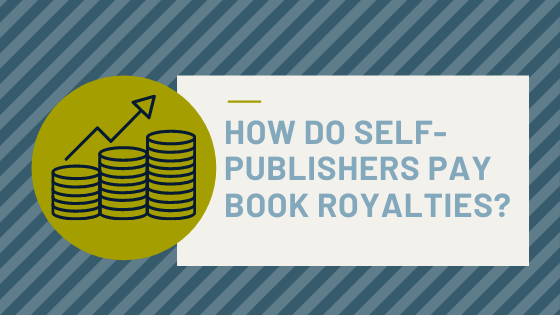No doubt when we launch ourselves into a book project we have visions of grandeur. Surely our book will become a runaway best seller with book royalties rolling in by the boatload. You can see it now, those big, fat royalty checks pumping up your bank balance as high as they do for those best-selling authors you admire.
Before you get carried away with your dream of newfound literary stardom, why not take a deep breath and learn a bit about how book-publishing royalties work? It’s always a good idea to get the real scoop at the outset, so at least you will have realistic expectations once your book launches.
How Do Book Royalties Work?
A book publishing royalty is the revenue paid to the author when a copy of their book is sold on a self-publishing platform. The primary determinant of royalty paid rests with the retail price you arrive at for your book. To be competitive in your niche, work with your book publisher to establish the best retail price, or peruse new listings in your genre with similar page counts.
Fortunately, publishing royalties are pretty straightforward and easy to grasp. For self-published authors book royalties take into account the following:
- Is the book being sold on an online platform? If so, each platform has its own royalty payment calculator. For example, Amazon pays one book royalty for print (60% of list price, less print costs) and another for eBooks (either 70% or 35% depending on pricing). Another publisher might pay 40% or 65% for eBooks and 55% for print, and so on.
- Determine print costs by utilizing a book royalty calculator provided by the publisher where you enter the book’s format details, such as the size, page count, color vs. black & white, etc.
- Is the book being sold through a wholesale book distributor? If so, the royalty is calculated based on the retail list price less the wholesale discount (usually about 40%), less the print costs, which are calculated based on page count and size.
How Often Are Book Royalties Paid?
All independent authors are eager to know how a self-published author gets paid, and especially when they will receive their first royalty payments. Since each publisher will have its own royalty payment schedule in place, the author needs to learn what that schedule is.
For example, an online retailer makes the initial royalty payment after 90 days but then pays monthly thereafter at the end of the month for the prior month’s sales. Any sales that occurred in foreign markets will also be paid on the same schedule and will reflect the different currency valuations. Some self-publishers make quarterly royalty payments. Others may hold off until the book has sold a certain minimum before paying out royalties.
Keep in mind that all book-publishing royalties are considered taxable income. Each publisher will provide the author with a Form 1099 at the end of each tax year that summarizes the royalties paid.
How Much Money Can You Make From Self-Publishing a Book?
You have gone to all the trouble of writing a book with the goal of being successful. Your book’s profitability will depend on a whole host of factors, including how you price the book. Because your book royalties are calculated based on the retail price less publishing costs, you want to make sure to price your book correctly. The publishing costs for a print book can vary depending on the choices made. For example, the format and trim size of the book that can influence the final page count.
So, when pondering how much revenue you can expect to generate from your book, you will first need to calculate the royalty for both print on demand (POD) and eBook formats. For example, based on the retail pricing your POD book may net a $5.50 book royalty per unit sold, and your eBook version might net $3.50. To set sales goals for your book you will use those values to estimate monthly revenue based on units sold.
Of course, your book will not sell itself! The key to self-publishing success is having a well thought out marketing plan. This requires planning and effort, but marketing will literally make or break the success of your book. Think of yourself as a traffic cop directing potential customers to your book. This can be accomplished through a variety of actions:
- Create Facebook ads on your Facebook author page that include a “Shop Now” button with your book’s URL directing them to your book’s online retail page, like Amazon or Barnes and Noble.
- Set up an advertising campaign on Amazon through Kindle Direct Publishing
- Make the rounds doing speaking engagements or book signings
- Set up booths to sell books at conventions or other events related to the content
As your book gathers reviews it will begin to gain traction, because the number of online book reviews can motivate a prospective customer to stop and take a look. The efforts you make in marketing your book should produce reviews over time, which will give the book more credibility and help you increase future sales.
When planning for profitability, keep in mind that you must take into account the “start up” costs, those expenses that were incurred in the development of your book. These might include editing and proofreading fees, cover design fees, copyright fee, purchasing ISBNs if necessary, and early promotional expenses. Your break-even point is arrived at by calculating the number of books that need to sell, based on royalties, before you clear that hurdle and begin to turn a profit.
Explore How Payment Works Through a Self-Publisher
All of these calculations can quickly become complicated. Instead of going it alone, why not touch base with the folks at Gatekeeper Press? These publishing professionals can guide you every step of the way, from concept to completion, and help you turn out an impeccable project that is sure to be profitable. Give Gatekeeper Press a call today!

